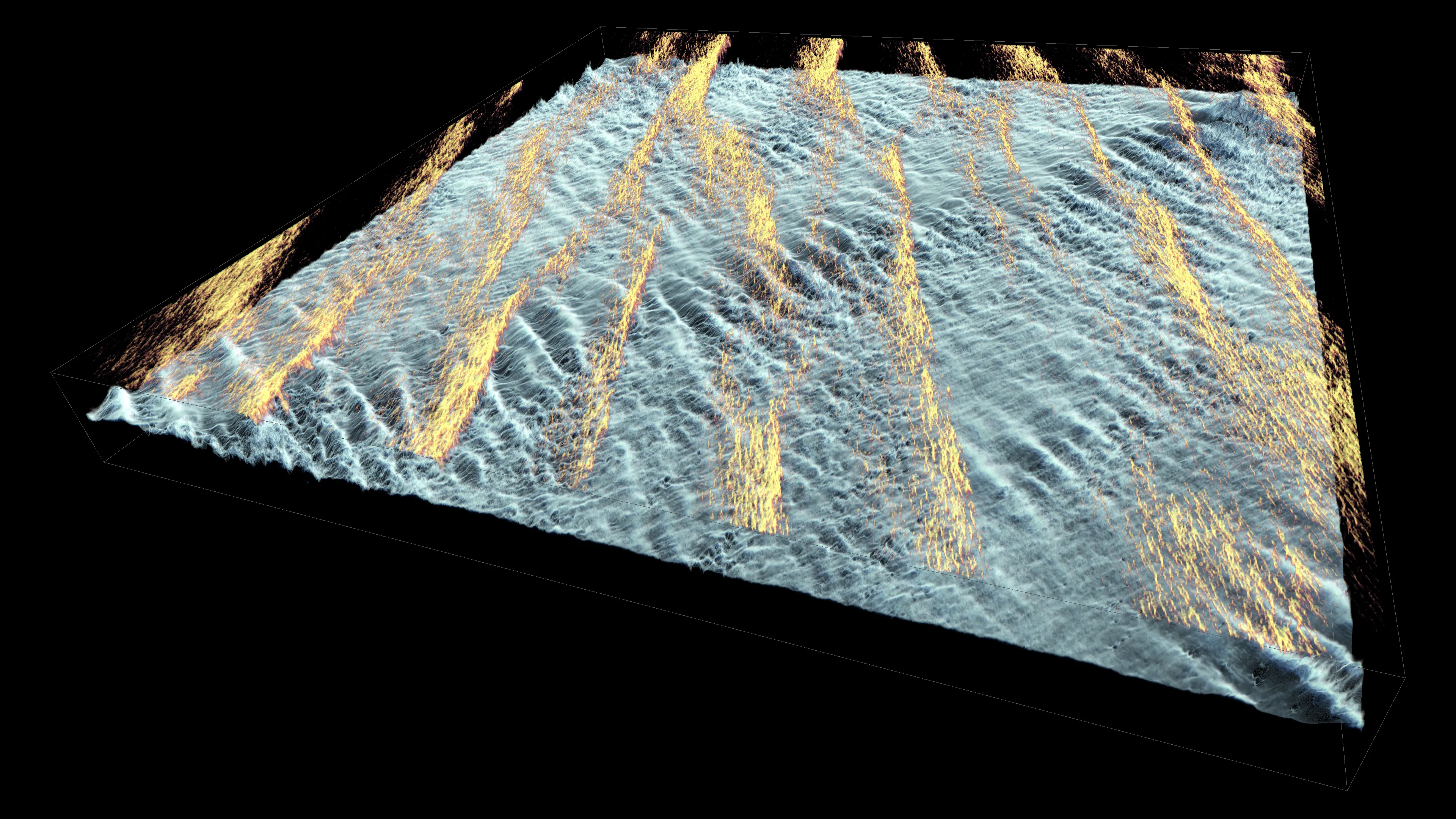
Simulated ocean surface boundary layer turbulence under Hurricane Irene (~9:30 UTC, August 28, 2011) entrains cold bottom water that cools the sea surface and weakens the hurricane as it makes landfall on the New Jersey continental shelf.
Large-aspect-ratio coherent structures that modify the evolution of the mean sea-surface temperature are highlighted in a 2 km by 2 km by 35 m deep domain.
These large structures, which are neither well-observed nor explicitly accounted for in typical ocean models, modestly but systematically alter the vertical fluxes of momentum and temperature under the storm. Hence, forecast models of sea-surface temperature change under a hurricane may require new observations and parameterizations of ocean turbulence that explicitly address the large-aspect-ratio structures.

As the hurricane approaches and the wind intensifies, the ocean surface current (orange) organizes into streaks along the wind direction. About 10 m below the surface, intermittent billows perturb the temperature interface (blue-gray) and drive exchange between the warm surface and cold bottom waters on the Mid-Atlantic Bight.
Daniel Whitt (NCAR/CGD) and Clifford Watkins (Rutgers University)
CISL Project Number: NCGD0038
CISL Project Dates: November 1, 2017 - October 31, 2018
Project Lead: Daniel Whitt
Project Title: Modeling impacts of winds on ocean submesoscales and mixed layer dynamics
Cheyenne: 10,600,000 core-hours
DIABLO large eddy simulation
Taylor, J. R. (2008). Numerical simulations of the stratified oceanic bottom boundary layer.
San Diego, CA, USA: University of California.
The simulation data were generated using the DIABLO Navier Stokes simulator with an LES closure by Daniel Whitt.
Matt Rehme (NCAR/CISL)
Imagery produced by VAPOR, a product of the Computational Information Systems Laboratory at the National Center for Atmospheric Research.
Watkins, C., and D. B. Whitt, Large-aspect-ratio structures in simulated ocean surface boundary layer turbulence under a hurricane. Journal of Physical Oceanography, doi: https://doi.org/10.1175/JPO-D-20-0134.1.
Related data can be obtained at https://doi.org/10.6084/m9.figshare.12486056.v5 or by contacting the authors of the paper.